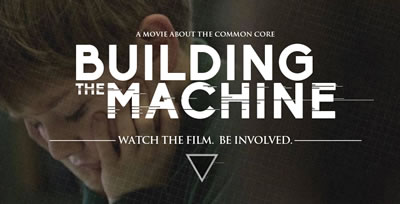COMMON CORE STATE STANDARDS
Summary
The idea of Common Core State Standards goes back to 2008 when Janet Napolitano, former Arizona Governor and 2006-07 chair of the National Governors Association, wrote a report focused on improving math and science education in public schools. She concluded that the U.S., at that time, did not have an “internationally competitive” education system. To begin to resolve the problem, Ms. Napolitano created a multi-state panel of higher education experts whose final report formed the basis of what became the Common Core State Standards (CCSS).
Since the beginning of the CCSS effort, the program has been both supported and rejected by educators and public school parents. In response to the ongoing debate, the Home School Legal Defense Association (HSLDA) produced a 40-minute documentary focused on pointing out the problems inherent in creating standardized K-12 education goals with the intention of applying those standards, across-the-board, to all students regardless of learning styles, remediation levels or cultural traditions. The documentary is entitled “Building the Machine,” but is widely known as “the Common Core movie.”
BUILDING THE MACHINE
A Review
“Building the Machine” is a documentary narrated by numerous PhD U.S. educators on both sides of the issue. Some of those opposed, while recognizing the need for the U.S. public education system to become internationally competitive, also recognize a significant list of issues with the Common Core program that have not been addressed at the federal level.
Although the final draft of the Common Core document was released for public comment (10,000 comments were received) and 48 states are shown on a list of “voluntary involvement” participants, opponents of the approach note that the “force of law” is being used to implement education concepts and ideas that are one-sided and not aligned with public needs and opinions. Opponents also pointed out that the standards were not necessarily adopted voluntarily, but were pushed on state boards of education in exchange for either money attached to the mandated Race to the Top program or for a total waiver from complying with the controversial No Child Left Behind act. Additionally, according to the documentary, the Common Core Validation Committee did not appropriately respond to comments received.
Untenable Goals – Common Core critics believe that the Standards represent a “centralized system designed to follow educational theories of a limited number of top-level educators” and that the approach actually boils down to systemization, centralization and data collection as the core of the entire K-12 education process. In addition, although 60% of American students entering college require some form of remedial training, Common Core standards focus only on credit bearing courses and do not allow taking a remediation approach for students that have fallen behind. Educators interviewed for the movie note that 22% of American students do not finish high school now and that the stringent requirements related to CCSS will make that number even higher.
Tests, Standards and the Common Core – Common Core critics cite that what CCSS really does is provide students with a bare minimum set of skills required to function in the industrial workplace and that the standards “are not high enough to get into selective universities or STEM programs.” In other words, the CC standards provide a single test to assure high school graduates are both “career and college ready.” Some educators have pointed out that “college and career” are two different things in terms of readiness and that the CC standards are too high for career requirements and too low for college entrance requirements and that what CC teaches ends up being “two full grades lower” than standards currently in place in individual states.
Critics also note the fact that, to a significant degree, other programs, tests and curriculums are being adjusted to match with Common Core requirements, including:
- SAT and ACT test content is being changed to align with Common Core.
- Textbooks are being re-written to Common Core standards (one high school administrator noted that, when an educator attends a Common Core conference or presentation, the lobby is full of textbook companies selling the latest version of math and science and other texts – all of which have been recently re-calibrated to match up with Common Core requirements.)
- High school graduation exams and requirements are being re-tooled to match Common Core, which effectively “runs all kids into the same chute.”
Parents’ Opinions – In recognition of the fact that the single most important element in education is parental support, Common Core did make a strong effort to include parent’s opinions in the validation process. A sampling of these opinions elicited a long list of concerns, including:
- Common Core is a huge, compulsory, national education experiment with no research to support its validity or non-validity.
- Common Core is built around the use of critical thinking skills which have not yet developed in younger children. K-12 students are not biologically capable of developed critical thinking because those skills come from the pre-frontal cortex, which is not fully developed until a human being is in their early twenties.
- Children are literal, not critical, thinkers so that when confronted with Common Core methods that they cannot understand, they start believing they’re “stupid” because they can’t complete the required critical thinking tasks.
- Adherence to Common Core requirements is creating a huge homework overload for students and this will, in the long run, create a mass exit to homeschooling.
Government’s Rights – Both positive and negative opinions expressed in the Building the Machine documentary were focused on the primary question encapsulated in the debate: “Is it the government’s right to decide what kids should learn or should kids have the right to choose their own educational path?”

